

Discover more from Frederick R. Smith Speaks
The Worshiped Wall of Separation
The post-modern thought process (Bubbles and Soap) “concludes” that early American history validates the wall of separation.
I call it atheism by establishment, when any state, as such, shall not acknowledge the existence of God as a moral governor of the world; when it shall offer to him no religious or moral worship; - when it shall abolish the Christian religion by a regular decree; - when it shall persecute with a cold, unrelenting, steady cruelty, by every mode of confiscation, imprisonment, exile, and death all its minister; when it shall generally shut up or pull down churches; when the few buildings which remain of this kind shall be opened only for the purpose of making a profane apotheosis of monsters, whose vices and crimes have no parallel amongst men, and whom will other men consider as objects of general detestation, and the severest animadversion of law. When, on the place of that religion of social benevolence, and of individual self-denial, in mockery of all religion, they institute impious, blasphemous, indecent theatric rites, in honor of their vitiated, perverted reason, and erect altars to the personification of their own corrupted and bloody republic; - when schools and seminaries are founded at the public expense to poison mankind, from generation to generation, with the horrible maximums of this impiety; - when wearied out with incessant martyrdom, and the cries of a people hungering and thirsting for religion, they permit it, only as a tolerated evil – I call this atheism by establishment.
Edmund Burke, The French Revolution Letters on a Regicide Peace (1795)
The True History of the First Amendment
Conventional wisdom considers the words “separation of church and state” a clause of the First Amendment to the Constitution. As we know, the First Amendment states:
Congress shall make no law respecting an establishment of religion, or prohibiting the free exercise thereof; or abridging the freedom of speech, or of the press, or the right of the people peaceably to assemble and to petition the Government for a redress of grievances.
Selective reading of historical documents from 1947 1 to the present gives us the notion of an impenetrable wall of separation between religion and government. The modern thought process “concludes” that early American history validates the wall of separation. However, feelings and desires cannot change history, but selective research will deliver the desired results. Enter the 2004 book Separation of Church and State.
This 560-page book is a fascinating study. The author, Philip Hamburger, is critical of the “cut and paste” method of history by focusing on the old assumptions about the Bill of Rights. The establishment chokes on its cud touting the right-wing “extremist Christians” meme because it is a Harvard publication. It is unavailable in most bookstores, and it is expensive, about $50.00 a copy hardcover (typical books of this size and quality go for approximately $30.00). That indicates an establishment endowment organ probably did not throw money at the publisher in an attempt to influence the population.
From the dust jacket of the book:
In a powerful challenge to conventional wisdom, Philip Hamburger argues that the separation of church and state has no historical foundation in the First Amendment. The detailed evidence assembled here shows that eighteenth-century Americans almost never invoked this principle. Although Thomas Jefferson and others retrospectively claimed that the First Amendment separated church and state, separation became part of American constitutional law only much later.
Hamburger shows that separation became a constitutional freedom largely through fear and prejudice. Jefferson supported separation out of hostility to the Federalist clergy of New England. Nativist Protestants (ranging from nineteenth-century Know Nothings to twentieth-century members of the K.K.K.) adopted the principle of separation to restrict the role of Catholics in public life. Gradually, these Protestants were joined by theologically liberal, anti-Christian secularists, who hoped that separation would limit Christianity and all other distinct religions. Eventually, a wide range of men and women called for separation. Almost all of these Americans feared ecclesiastical authority, particularly that of the Catholic Church, and, in response to their fears, they increasingly perceived religious liberty to require a separation of church from state. American religious liberty was thus redefined and even transformed. In the process, the First Amendment was often used as an instrument of intolerance and discrimination.
There are copious positive reviews on Amazon’s web page of the book listing. Still, naturally, there are detractors, and they have their right to free speech, as in this well-detailed and analytical example:
Despite copious references to source documents, Hamburger’s book faces the wrath of the Caustic Cancel Culture Pogrom. Nevertheless, those who have a more serious interest in history than the average person already know that Thomas Jefferson was the first to popularly introduce this “wall” in the United States. In 1802, Jefferson wrote a letter to the Danbury Baptist Association in which he stated:
I contemplate with sovereign reverence that act of the whole American people which declared that their legislature should ‘make no law respecting an establishment of religion, or prohibiting the free exercise thereof,’ thus building a wall of separation between Church & State.
The above notwithstanding, a careful and comprehensive review of historical documents as presented in Dr. Hamburger’s book indicates that 18th Century Americans rarely used the principle of separation of Church and state. Furthermore, the Founders gave us the First Amendment to assure freedom for all religions and prohibit establishing any one church as the state religion.
Thomas Jefferson likely took the notion of a wall of separation from Roger Williams (Founder of Rhode Island), an early proponent of religious freedom. It is also possible Jefferson knew of the idea of a wall of separation from the work of an 18th Century writer that he admired - James Burgh. We have a problem, Houston. Before Jefferson, the phrase “wall of separation” generally dealt with churches themselves separating from worldly impurities. Nevertheless, in 1875 president Ulysses Grant used the term; 1878, Chief Justice Morrison Waite; and 1947, Justice Hugo Black (Everson v. Board of Education of Ewing, New Jersey). The 1947 case forbade New Jersey to spend state education funds for religious education. It seems the 1947 case opened the flood gates. After that, the wall of separation outside the original context has become the hallmark of interpretation and court cases concerning religion/government relations.
Madalyn Murray O’Hair (1919–1995), an atheist, filed several lawsuits dealing with First Amendment separation of church and state issues. In 1960 she was a plaintiff in a suit, Murray v. Curlett, that sought to prohibit Bible reading in the Baltimore public schools as an unconstitutional activity. The case was consolidated with Abington School District v. Schempp (1963), in which the Supreme Court extended the ban on prayer in public schools established in Engel v. Vitale (1962) to Bible reading and the recitation of the Lord’s Prayer. 2
Today, our debased collectivist friends no longer admire Jefferson because of his connection with that “curious institution.” Accordingly, the WOKE 3 folk will need to invoke crafty intellectual gymnastics to invoke their beloved wall. Speaking of WOKE, arguably, this wretched cult is a substitute for religion. The mad machine allows that movement to fully exercise their creed in the pubic sphere via burning, looting, and murdering (blm, aka BLM). And oh, lest we forget, many BLM folk are very lightly pigmented for equity and inclusion sake. Perhaps they are trans-racial.
The Morphed Wall
The postmodern interpretation (1947) of the First Amendment has morphed the establishment clause into a notion that there must be no contact between Church and state. This modern “wall,” through the First Amendment, has resulted in discrimination and intolerance. One of the more critical historical items not presented by the wall worshipers is that “separation” has become a pseudo-constitutional limitation through prejudice and fear. Jefferson, a Democratic-Republican, invoked the wall due to his hostility toward the New England clergy that supported the Federalist Party. Later, Protestants used it against Catholic immigration and Papal influence.
Daniel L. Dreisbach’s 2003 book Thomas Jefferson and the Wall of Separation Between Church and State noted that Thomas Jefferson probably used the wall metaphor for political reasons. Dreisbach began his research focused on Jefferson’s original draft of the Danbury letter and the political advice and the electoral setting of the period. What is not generally known is that Jefferson’s letter backfired by alienating the Baptists. The Baptists were for the disestablishment of the Congregationalists, but they were not for the total separation of religion from public life.
Any research dealing with the wall causes the immediate Pavlovian knee-jerk reaction of “controversial.” In addition to the more recent book by Hamburger, a political interpretation of Jefferson’s wall caused a stir when it was part of a 1998 Library of Congress exhibit by Dreisbach. Historian Robert Alley averred that Jefferson wanted a secular public square, and he successfully got other scholars to protest Dreisbach’s display. These scholars said that the exhibit “ignores the past 60 years of Supreme Court opinions that analyzed Jefferson’s phrase.” Good try, but Your Author agrees. However, the past 60 years are not the Founding history.
It is impossible to separate religious and political ideals for people that make up the government. Therefore, it also is important to note that Constitution, Article 6, Clause 3 states:
The Senators and Representatives before mentioned, and the Members of the several State Legislatures, and all executive and judicial Officers, both of the United States and the several States, shall be bound by Oath or Affirmation, to support this Constitution. Still, no religious Test shall ever be required as a Qualification to any Office or public Trust under the United States.
In direct violation of the above Article, in late 2018, federal judge nominee Brian Buescher faced a grilling over his Knights of Columbus membership during Senate confirmation hearings. Then Kamala Harris (D-Calif.), a nominating committee member, demonstrated the gravest bigotry possible.
A person is free to worship or not worship in their manner as a senator or representative. However, does this preclude a person from showing respect to God in their official capacity? The wall worshipers selectively make their disdain for any public acknowledgment of the Deity by government officials. After all, the wall crowd goes ballistic whenever a conservative speaks at a church. Still, the debased collectivists look the other way when a liberal (Democrat) goes to Church to bolster their campaign for office. For example, in November 2021, Vice Kamala Harris recorded a video encouraging African American church members in Virginia to vote for Terry McAuliffe (D) for governor.

Gag Fred with a big wooden spoon.
As a result of this unwavering support, the wall-worshiping crowd has forced traditional religious expression into the background. The same groups promoting the wall and banishing traditional religious beliefs from the open find it perfectly acceptable to insert their secular creed (e.g., secular humanism). Groups such as the mighty American Civil Liberties Union (ACLU), Socialist Propagandists Liars & Crooks (SPLC), Americans United for Separation of Church and State, and People(s) for the American Way shove their values onto society in an absolute and legalistic manner. The new absolutes by the same people who revere moral relativism. While one can argue that secularism is not religious, even though many of these people are sometimes more zealous than the churchgoers, they do the very thing that they claim the religious do – throat shove. Curious.
Hamburger’s book demonstrates that Jefferson’s “wall of separation” was never intended to be a post-modern-iron-clad instrument but instead was constructed on the anti-Catholic views in the 1940s. The Founders did not intend the First Amendment to be used to remove any expression of religion in the public sphere. Unfortunately, the wall has become the mantra of academia, politicians, and judges. Wonderful.
Some elite may agree that this research is lovely, but the wall has taken on a life of its own—revisionist history for sure. Nevertheless, debate on the latest research may question the conventional fiat notion that society must be secular and religion must be confined and hidden away. Regardless of their religiosity, citizens should be able to engage in the community at large.
A Religious Theocracy or Absolute Secularism?
Does Your Author desire a theocracy? Of course not, but there is, in reality, nothing dangerous about the free expression of one’s religion in the public square. Today that should be true because we know much about “tolerance” (some swampland for sale in Texas). However, if the wall zealots continue their ideological war, the Caustic Cancel Culture Pogrom (CCCP) stands ready to destroy:
Prayers during congressional sessions
Prayers before court sessions
Swearing to tell the truth, the whole truth, “so help me God.”
The Ten Commandments chiseled in stone on the Supreme Court building
Military chaplains
The Federal holiday “Christmas”
Religious symbols on gravesites at military cemeteries
Localities and streets with religious names
“In God We Trust” on our currency
Presidents placing their hand on the Bible during the swearing-in ceremony
The word “God” on many Federal parks where the dead are honored (e.g., the battleship Arizona memorial in Pearl Harbor).
In addition to the above, a common mantra of the wall zealots is “we must not permit the use of any tax monies to fund any religious activities in the public square.” That is the other arrow in the wall zealot’s quiver. Accordingly, if we cannot have any public display of religious symbols in any manner, the CCCP stands ready to jettison:
The presentation of a spiritual bumper sticker as we operate our vehicles on taxpayer-funded highways (anything else including Satanic religion exempted)
Church ringing its bells because that sound may permeate the air and offend somebody (loud non-religious and Satanic religion music exempted)
Church using its vans on the road to take parishioners on a field trip
A religious group peacefully protesting at a public street or a park
A church group using a park free of charge for a picnic (when others are not required to pay a fee)
Placing a religious symbol next to a highway where a loved one died in an auto accident
“Minister” holding any public office, including future presidential candidates (debased collectivist ministers are exempt)
Religious organizations broadcasting on the “public” airwaves (Satanic and pornography exempted)
Meanwhile, the wall of separation cultists enter rallies for all types of public displays of debauchery and evil under the guise of freedom of expression. They and their ACLU accomplices can go pound sand.
Censorship of God
The above religious hated bullets may seem silly but think about all the frivolous lawsuits to censor God. While there are many God censorship cases, it is appropriate to review a particularly irritating example in Columbine, Colorado.
Mr. Brian Rohrbough, whose son Danny faced death on April 29, 1999, at the Columbine High School massacre, faced censorship. School officials demanded that he not reference God on two 4-inch tiles that are part of a memorial. In January 2003, the U.S. Supreme Court declined, without comment, to hear an appeal of a ruling that prevents families from having tiles that refer to God. The tiles are with 4,000 others along the school corridors above the student lockers.
Mr. Rohrbough has said: “If you asked me to create a memory of my son, it is always going to include a reference to God because it is a core value.” He has also indicated no intent to proselytize with the tile. It would be necessary to be very close to see the individual tiles. Mr. Rohrbough has also claimed the district retaliated to criticize its failure to avert the attack. Twelve students, teacher Dave Sanders, and teen gunmen Eric Harris and Dylan Klebold died during that fateful day.
The spokesman for the Jefferson County School District said that this [censorship] was best for the students and the school to, get this, “avoid dwelling on the killings.” The other excuse: other memorials existed outside the school.
The school district had invited parents to create tiles as part of the renovation of the school after the attack. The flimsy excuses continue: officials said the tiles should not be a “memorial.” If not a memorial, then what is it? Furthermore, they do not want it to remind the students. Naturally, the rules indicated that none would carry a religious theme (here’s the wall – literally). Can school officials be any more duplicitous? You bet. Mr. Rohrbough has attempted to remind the establishment that a plaque is hanging in the school office saying “God Weeps Over Columbine,” and they have a clock stopped at 11:10 (the moment the attack began). This author must conclude that the Columbine School district must have used Orwell’s book “1984” for their rules of engagement.
A federal judge ruled in favor of the parents on free-speech grounds, but it is sad to say the wall worshipers made a move on their chessboard - the 10th U.S. Circuit Court of Appeals overturned the decision. The Supreme Court declined an appeal of that decision. 4 The Satanists won (that fight but not the war).
As a pro-life advocate and devout Christian, Brian Rohrbough faces the wrath of the collectivists, as illustrated in a Reddit post.
Back to the future… On December 2, 2021, Thomas Carroll, superintendent of schools for the Archdiocese of Boston, warned that President Biden’s Build Back Better bill would drive Catholic schools out of early childhood services. The bill would provide $400 billion in federal childcare and pre-kindergarten funds. Still, it would demand that Catholics adopt sexual orientation and gender identity regulations that violate Church teaching. “In the Catholic Church, we have 2,000 years of Church teaching. We’re not giving it up to get federal money for child care or pre-K,” said Carroll.
Meanwhile, over the last 12 years, Boston has allowed numerous organizations to have their flags flown on the City’s third flagpole. The only time the City denied an application was when Harold Shurtleff applied to fly a Christian flag. CatholicVote.org Education Fund filed an amicus brief in defense of Shurtleff. The brief stated:
To fall within the doctrine [of government speech] ... the government itself must be speaking—not merely permitting third parties to engage in expression on government property and then invoking the protection of the government speech doctrine once a particular group proposes speech with which the government disagrees.
Summary
As a matter of quick reference, the following table is a historical overview of Church and state relations:
Chronology
Founding History
Establishment according to the First Amendment
The government shall not establish any particular religion. The people are free to exercise their faith, and the Bill of Rights guarantees individual civil liberties. The Bill of Rights, in reality, limits or places “brakes” on the Federal government.
Twentieth Century
“Wall of Separation” according to selective history, liberal interpretation, and judicial activism
Any interpretive resemblance of the government even remotely “supporting” a religion, including the display of religious symbols in the public sphere, is interpreted as the government establishing a religion. Many other groups can receive copious amounts of government funding, directly and indirectly.
Now and the Future
No contact between orthodox Christian Church and state whatsoever (debased collectivist “churches” and others exempt)
The wall of separation is starting to become oppressive and a tool of prejudice against religion. The Bill of Rights is no longer just a set of brakes on the Federal government as it is now placing restraints on the citizens. Soon, many people will incorrectly assume that any relations or mere communication between the Church and state are slouching toward a theocracy. So much for free exercise, and of course, the ACLU is on the same page as Satanists.
Conclusion
The information above and the exhaustive analysis in Hamburger’s book show that the separation of Church and state has no historical basis in the First Amendment. The wall became a constitutional “freedom” (cough, cough) primarily by prejudice and fear. Secular people should be free to worship their wall or venerate “reason” in the public square. Accordingly, religious people should have no barriers blocking their faith in public.
It is also important to note that the United States government is “of the people, by the people, and for the people.” Therefore, one must consider a large number of members of organized religion. Is it fair to say that any person elected to any public office must now absolve all connections to their faith? We live in an ideological and spiritual war at this time in history. One side is taking advantage of the system to suppress those who wish to acknowledge their religious beliefs.
Finally, for those who do not think that the “separation of church and state” issue is a menacing problem, may I suggest that you please consider the information presented herein?
Stay tuned for the next Frederick R. Smith Speaks installment, The Treaty of Tripoli. As a myth buster, we will counter the postmodern debased collectivist secular humanist notion that this treaty alone proves that we are indeed a “totally secular nation.”
Cogent author and publisher, Frederick R. Smith
Everson v. Board of Education (1947) - The Supreme Court’s first interpretation that the First and Fourteenth Amendments require “separation of church and state”
Quote from The First Amendment Encyclopedia
WOKE = Willfully Ordering the Killing of Entrepreneurship
Brian Rohrbough: An uncompromising pro-lifer | positive
Brian Rohrbough Character Analysis | negative from the dark side





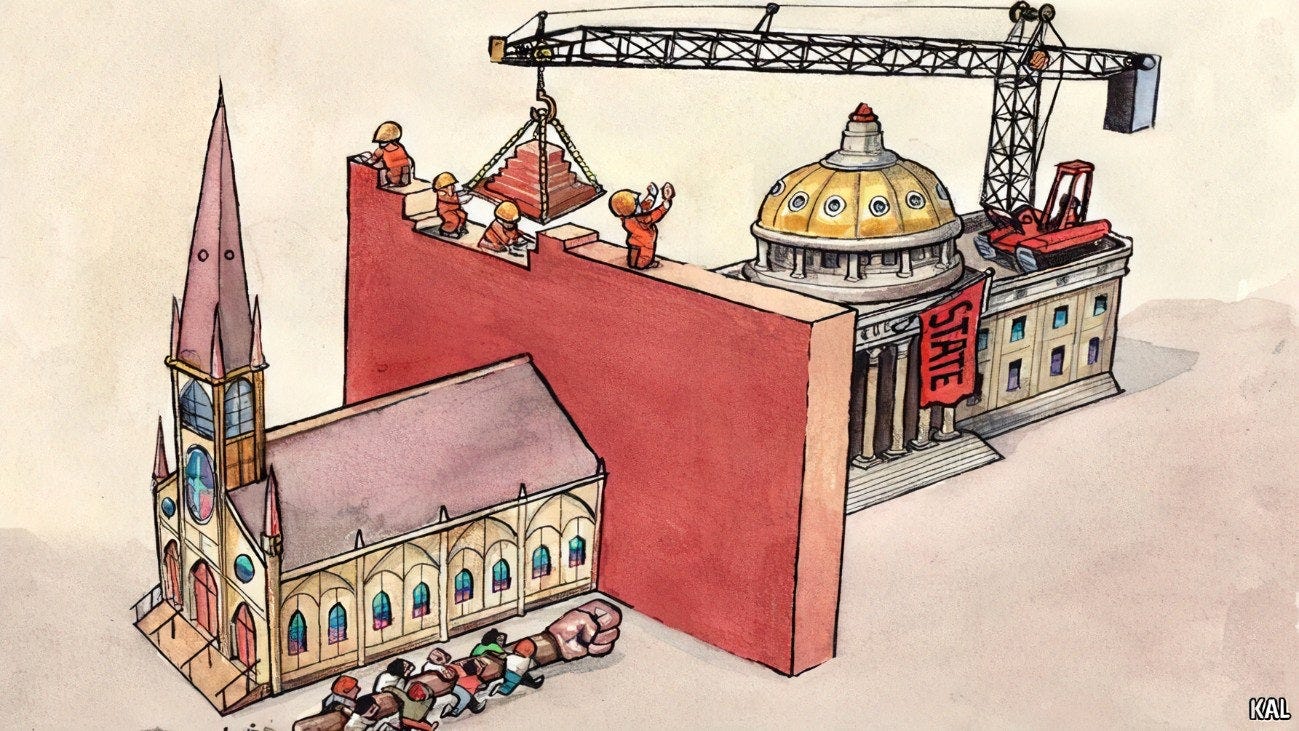
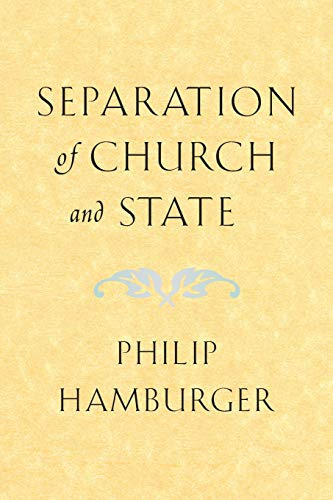

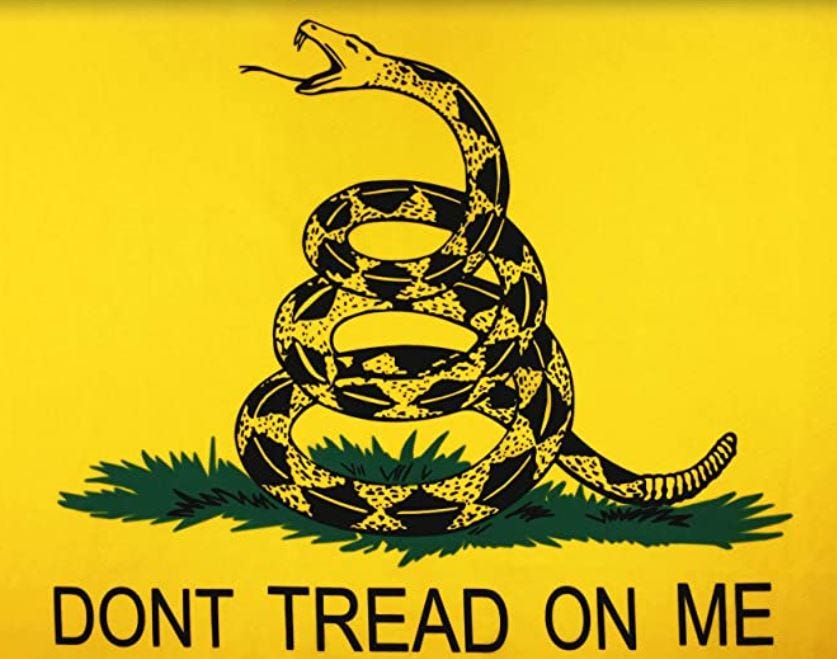


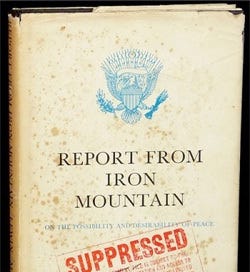

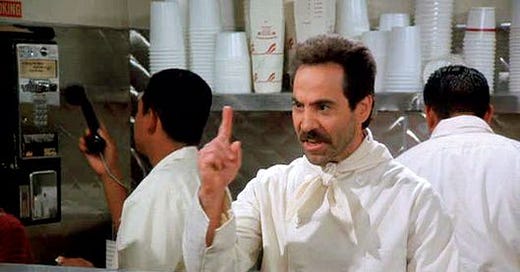

During the American Revolution, General George Washington outlawed Guy Fawkes' Day celebrations. He called the custom of burning the pope in effigy childish and ridiculous – and he noted that Catholics were among those fighting for Independence. “At such a juncture, and in such Circumstances, to be insulting their Religion, is so monstrous, as not to be suffered or excused; indeed instead of offering the most remote insult, it is our duty to address public thanks to these our Brethren,” stated Washington. https://www.catholicnewsagency.com/column/51127/george-washington-among-the-catholics